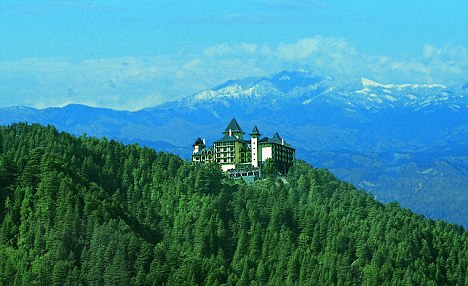Indian Summers is Channel 4’s most expensive drama to date and has been filling our screens with the eccentric – and often naughty – antics of Brits in colonial India. The series transports us to 1932 and the Himalayan hill station of Simla (now known as Shimla). We are also in an India ruled by British civil servants who flock to Simlain their hundreds to escape the oppressive heat of the cities during the summer months.
It is undoubtedly a rather nice way to spend an hour of your time on Sunday evenings. The cinematography is stunning, the scenery glorious and there is enough style and suspense to keep you coming back for more. It also makes you think just how great Indian food tastes,which is odd, because the British Raj were not famed for embracing India’s cuisine. Instead, they preferred to stick with what they knew best and eat British.
About half way through episode one, just as many of us were dreaming about eating a beautifully cooked seekh kebab or rogan josh, Cynthia (played by Julie Walters) announced that roast beef was to be served at the British Club.
Believe it or not, the British Raj would merrily gorge on the meat of India’s holiest of animals whenever the opportunity presented itself. Admittedly, eating beef does not seem to have been a regular occurrence but the fact remains that it happened. Eating beef did not happen that often – not because Brits wanted to respect the beliefs of the country’s Hindu population, but rather because it simply was not practical. Cows were not bred for their meat and the meat was darker and tougher than British beef.
Due to a number of factors – climate included – beef was usually salted, dried, pickledand occasionally roasted. It was served with Yorkshire puddings and horseradish. Other than that, it was cooked in a curry. Exactly who was given the job of cooking beef during this period is unclear, although research suggests Muslim, Christian or Buddhist chefs may have been given the task.
Clubs such as the one run by Cynthia in the series were part andparcel of life in the British Raj. The first one appeared in Calcutta in 1827 and was named The Bengal. So other than beef, what else was being served up at British feasts inSimla at this time?
Research suggests that oysters would have made it as far as Simla via the railways – there were oyster beds in both Madras and Bombay. There were also the yellow raspberries that grew in the Himalayan town that were considered a real treat. Aside from that, there would have been the usual array of tinned meats, kedgeree and mulligatawny.
If you are looking for an authentic Indian meal that is a world away from tinned meats, then a visit to Veeraswamy, overlooking London’s Regent Street will satisfy your cravings. It opened its doors in 1926 and is still known today for its refined cuisine and Raj-inspired style. It’s the perfect place to spend an Indian summer with only the best food on the menu.

